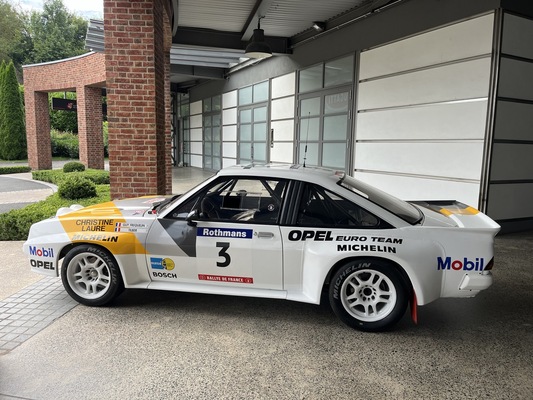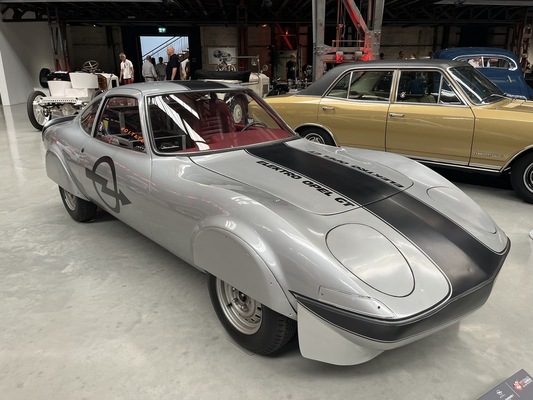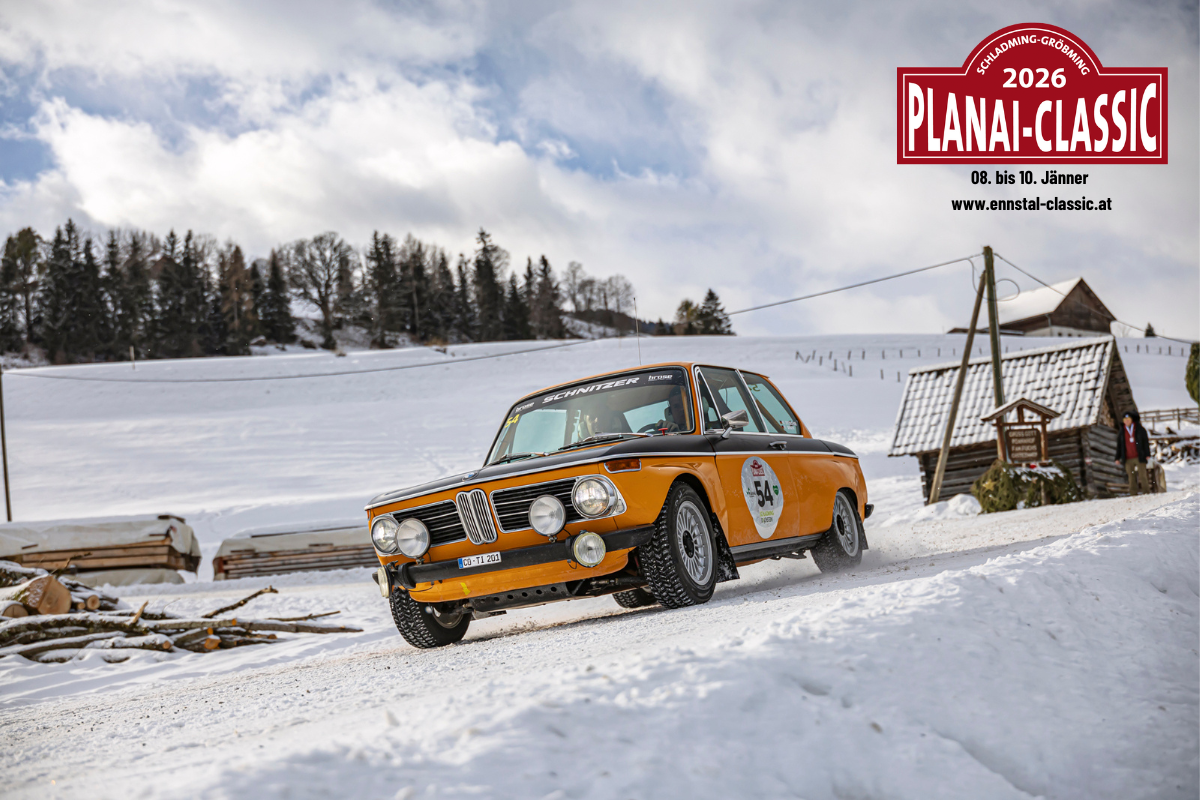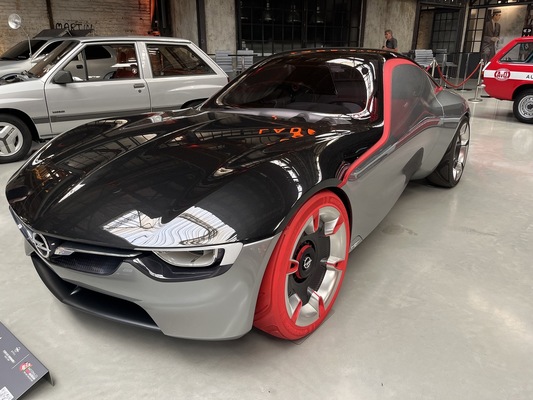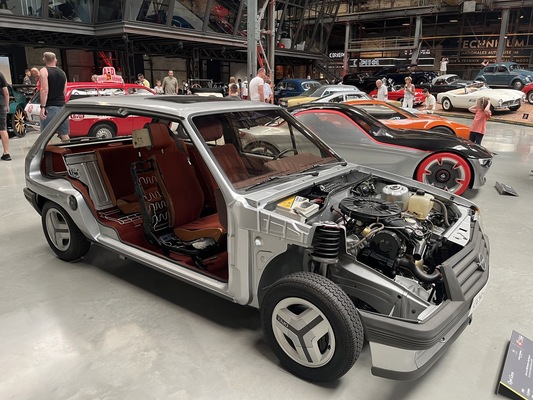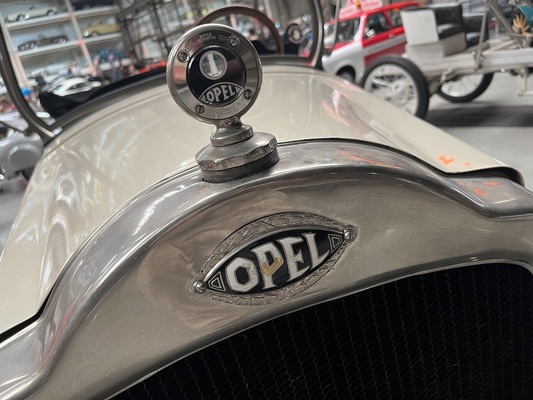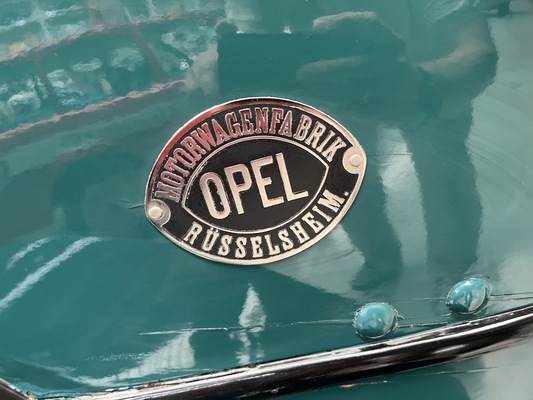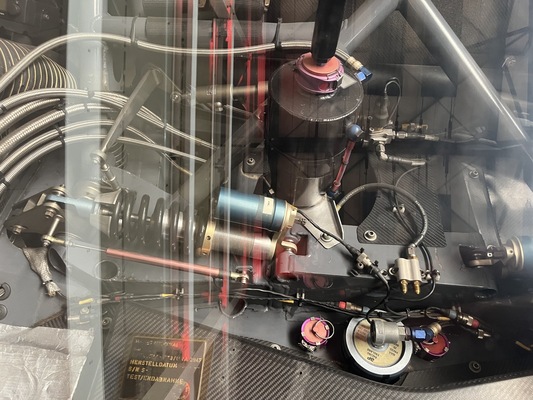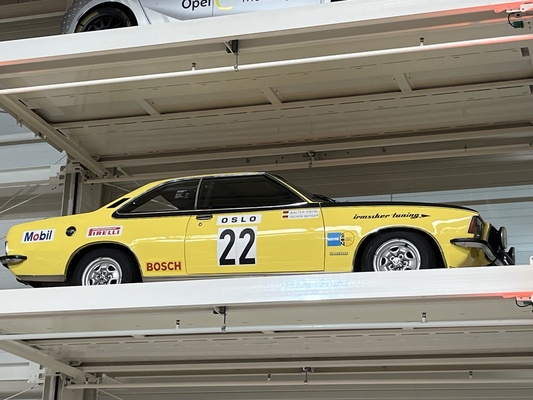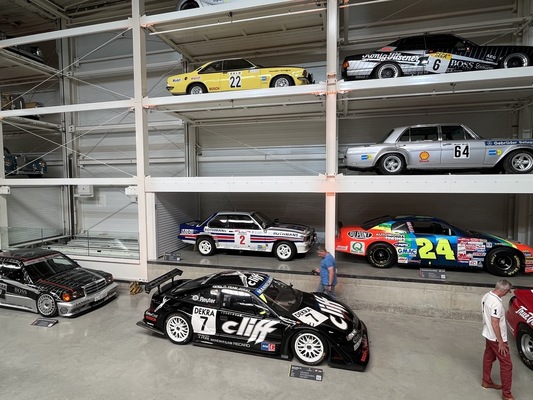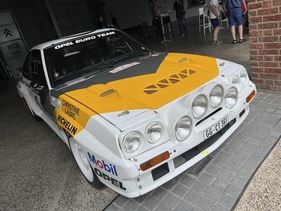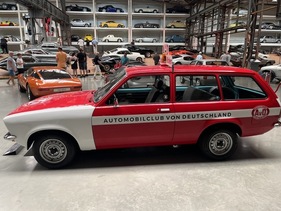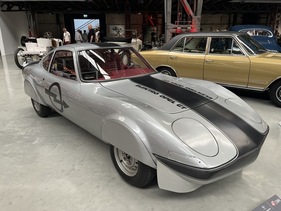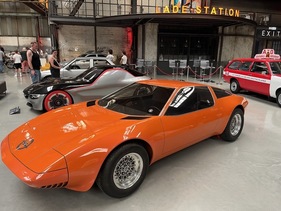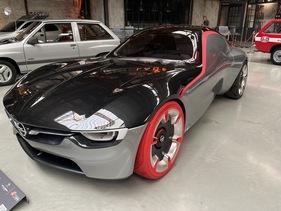Unlike most other German manufacturers - Audi in Ingolstadt, BMW in Munich, Mercedes-Benz and Porsche in Stuttgart and Volkswagen in Wolfsburg - Opel does not have its own museum. A small team led by Leif Rohwedder has been working hard to maintain the Opel Classic Collection in Rüsselsheim since 2022, but it is not open to the public. There are virtual tours for those interested, during which various topics are discussed. Occasionally - but unfortunately rather rarely recently - vehicles can also be seen at events.

It is unlikely that the museum situation will change soon under the Stellantis Group management. The historic collection of the sister brand Citroën, previously housed in a rather dreary hall in an industrial estate in Aulnay-sous-Bois north of Paris, was recently closed. The building will be demolished and the collection will not be accessible for the next few years. Future rather uncertain, plans for a museum remain vague. The Fiat Museum in Turin is also closed until further notice. At least there is the "Heritage Hub" for the Alfa Romeo, Fiat and Lancia brands. Peugeot also has its own museum, but there are no plans for Opel in the foreseeable future.
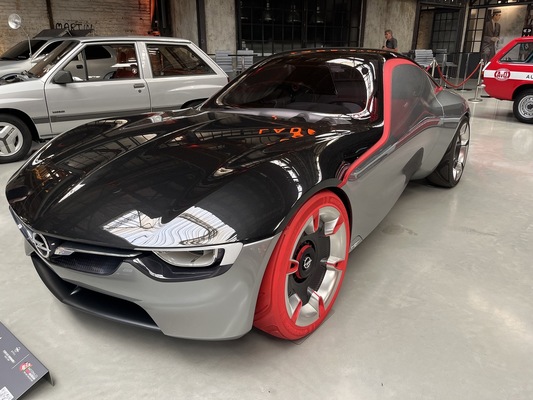
At least there are some nice private initiatives such as the collection at the Vogelsang facility in Schleiden in the Eifel region, where the Degener brothers - descendants of a former Opel dealer family in Vreden, Westphalia - exhibit around 220 Opel vehicles. And now the German "National Car Museum - The Loh Collection", which opened in July last year, is organizing an exhibition in collaboration with Opel Classic to mark the 125th anniversary of Opel as a car brand.
The beginnings, spatially and temporally
In contrast to the museum's large annual special exhibition, which last year was dedicated to the 24 Hours of Le Mans and this year focuses on the Ferrari brand, the Opel exhibition is integrated into the regular museum presentation. This means that visitors can view the exhibition, which is located in the large museum hall, at no extra charge.

Outside, visitors will find a Group B version of the Opel Manta 400, which was driven by French rally ace Guy Fréquelin, later Citroën sports director and sponsor of the talent of the century Sébastien Loeb. A corresponding service car - a Chevrolet G20, also with "Opel Euro Team" lettering - is parked on the terrace of the museum restaurant.

Inside, the Opel Patent Motor Car "System Lutzmann" from 1899 is the oldest exhibit in the special exhibition. It is the first Opel automobile ever, after the company had previously made a name for itself with the production of bicycles and sewing machines. Friedrich Lutzmann from Dessau was responsible for the design. Of the 65 units built, three still exist today. The 1545 cc single-cylinder engine produces 3.5 hp.
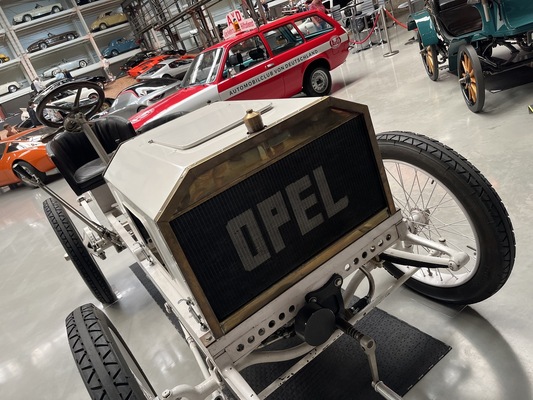
The 12 hp racing car from 1903, which was already capable of 72 km/h, was more sporty. The engine was the first power unit designed by Opel itself. With Dr. Fritz Opel and Carl Jörns as drivers, the class victory at the Frankfurt track race in 1903 is considered the brand's first significant motorsport success.
Luxury with six cylinders
The Opel 4/20 PS, a luxury two-seater with a 20 hp one-liter four-cylinder engine, was the first German car to be produced on an assembly line in 1929. In its first year of production in 1924, the Opel 4/12 PS was only available with a green paint finish, which, due to its close resemblance to the Citroën 5 CV, led to the expression "The same in green", which is still used today.
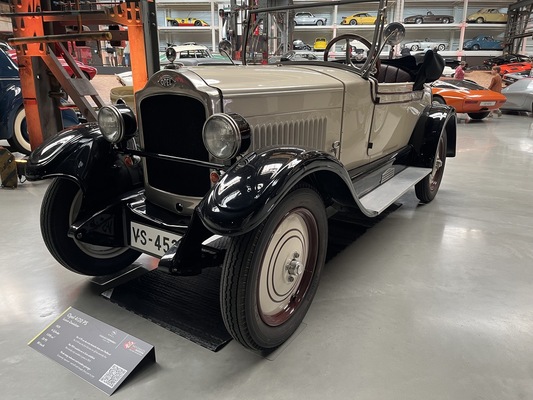
The Opel Admiral, built in 1939, features an aerodynamic body and stylistic elements from the Art Deco era. With this car, powered by a 3.6-liter six-cylinder engine, Opel offered an alternative to brands such as Mercedes-Benz, Maybach and Horch in the luxury class.
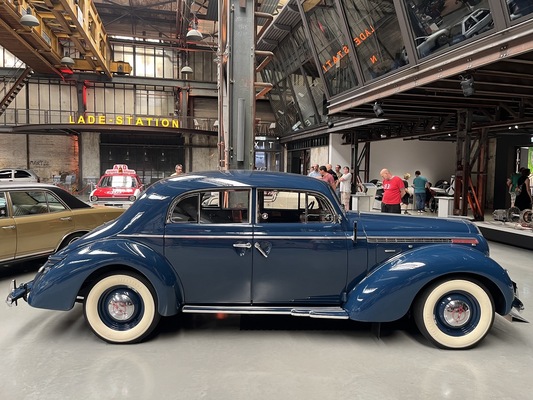
The angular Commodore GS/E from 1970 stands in stark contrast to the aerodynamic Admiral. The Opel Commodore was available with two or four doors and as a coupé. The GS/E version with a 150 hp six-cylinder engine was aimed at more sporty drivers.

Next to it is an Opel GT with electric drive, built in 1971. The two coupled DC motors produce a total of 160 hp, with which the car reaches a top speed of 214 km/h. With Georg von Opel (grandson of brand founder Adam Opel) as driver, the car set six world records in Hockenheim.
Studies and cutaway models
The Opel Genève, a design study intended for the 1975 Geneva Motor Show, shines in eye-catching orange. A Wankel engine was planned, but like the entire project, this was not realized, not least because of the oil crisis in the early 1970s. The Opel Genève therefore remained a show car that could not be driven.

The Opel Kadett Caravan on display dates from the same year. A total of 190,461 of the station wagon version of the C-Kadett, the last Opel compact car with rear-wheel drive, were built. The car on display is an emergency vehicle of the traffic assistance service of the Automobile Club of Germany (AvD), which was founded in 1952 and is also celebrating its 125th anniversary this year.

The Opel Corsa, introduced in 1982, was and is a guarantee of success in the compact class. Many young people started their car life with a Corsa, including the current Opel CEO Florian Huettl. The example shown in the exhibition is an elaborately designed cutaway model of a three-door A-Corsa.
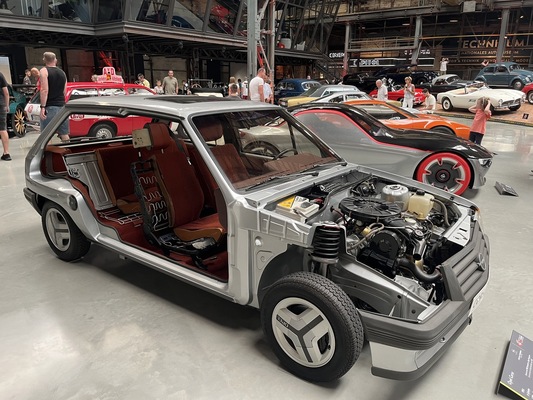
The Opel Corsa Moon is much more futuristic. The car was built in 1997 as a show car for the world premiere of the Corsa facelift, under the motto: "The Corsa is so successful on Earth that the next step is space."

The latest model in the exhibition is the Opel GT Concept from 2016. The name and the design of the steering wheel refer to the original Opel GT. The study from the 21st century has a small 999 cc three-cylinder front-mid engine that delivers 145 hp.
Motorsport
Around the corner, perhaps not entirely coincidentally with a Mercedes-Benz 300 SL in the background, is the Opel Astra OPC X-Treme from 2001. Like the Mercedes, the super sports car study also has gullwing doors. The X-Treme is based on the Opel Astra V8 Coupé, with which Opel made a significant contribution to the revival of the DTM in 2000. The Opel was also quite successful in its first year: Manuel Reuter fought for the title almost to the end. Opel planned a small series at a sales price of one million DM, but this was never realized.
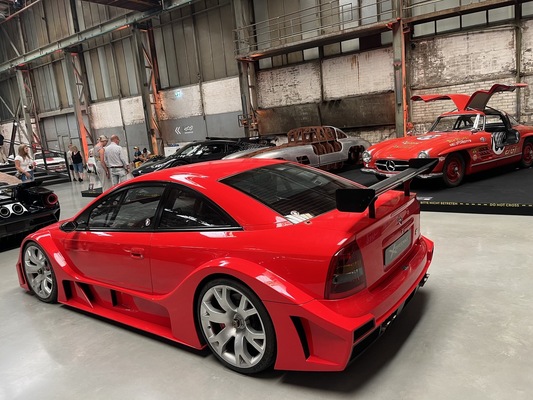
Against the rear wall of the exhibition hall there is an oversized display case in which numerous cars are also exhibited. Here are two important vehicles from Opel's motorsport history. The Opel Ascona 400 in which Ari Vatanen and Terry Harryman won the 1983 Safari Rally can be seen in the display case. The car in the unmistakable Rothmans color scheme is in unrestored original condition, including additional headlights and protective bars at the front and rear.
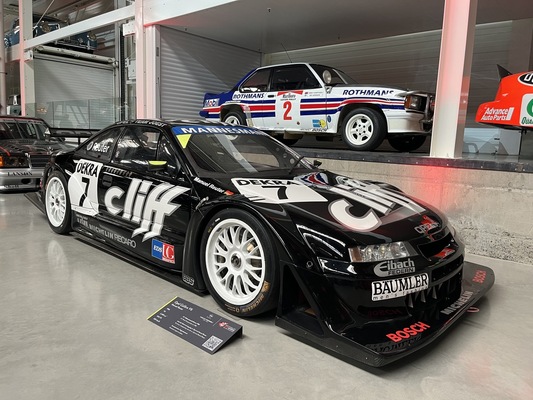
The "Cliff-Calibra", Manuel Reuter's champion car from the 1996 International Touring Car Championship, stands on the floor in front of it. In that year, the FIA had taken control of the DTM, because the increasing internationalization of the former German championship was a thorn in the side of the world association - above all Formula 1 boss Bernie Ecclestone. Opel had entered two Calibra cars in the 1993 DTM season finale on a trial basis and was involved from the 1994 season onwards with the Coupé, receiving technical support from the Williams F1 team. After winning the ITC title in 1996, Opel followed Alfa Romeo's example and announced the end of its involvement, bringing the DTM era to an end for the time being.
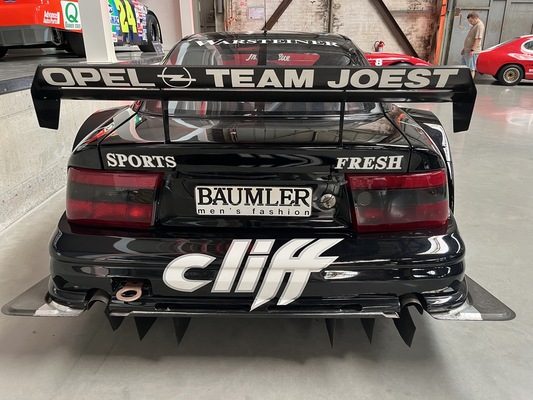
Also from the factory collection is the Opel Commodore of Walter Röhrl/Jochen Berger from the 1973 Monte Carlo Rally, which is also on display in the display case. Röhrl contested his first rally as a professional for Opel with this car - entered by the Irmscher team on behalf of the factory. It was also his first participation in the Monte-Carlo Rally, which he won four times.
The competition vehicles round off the special Opel exhibition, which can be seen until November 17. Further information on admission prices and opening hours can be found on the museum's website.


